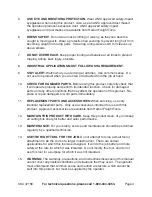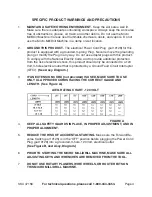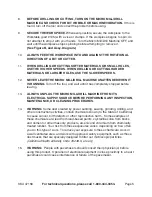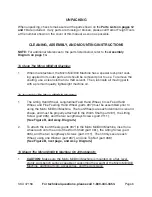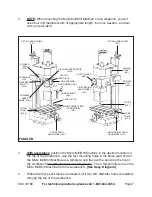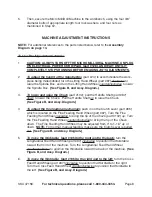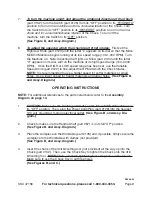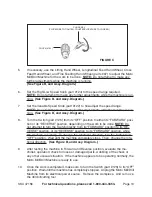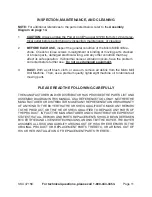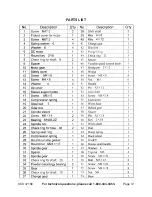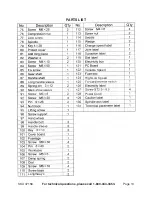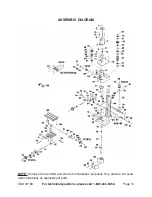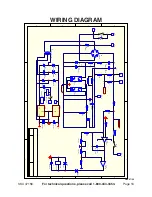
Page 5
SKU 47158
For technical questions, please call 1-800-444-3353.
8.
BEFORE DRILLING OR CUTTING, TURN ON THE MICRO MILL/DRILL
MACHINE AND CHECK FOR BIT WOBBLE OR MACHINE VIBRATION.
If this is
found, turn off the tool and correct the problem before using.
9.
SECURE THE WORKPIECE.
Whenever possible, secure the workpiece to the
Worktable (part #105) with a vise or clamps. If the workpiece begins to spin, do
not attempt to stop it with your hands. Turn the Micro Mill/Drill Machine OFF, and
wait until the workpiece stops spinning before attempting to remove it.
(See Figure B, and Assy. Diagram.)
10.
ALWAYS FEED THE WORKPIECE INTO AND AGAINST THE ROTATIONAL
DIRECTION OF A BIT OR CUTTER.
11.
WHEN DRILLING OR CUTTING SOFTER MATERIALS OR SMALL HOLES,
USE THE HIGHER SPEEDS. WHEN DRILLING OR CUTTING HARDER
MATERIALS OR LARGER HOLES, USE THE SLOWER SPEEDS.
1.
NEVER LEAVE THE MICRO MILL/DRILL MACHINE UNATTENDED WHEN IT
IS RUNNING.
Turn off the tool, and wait until it has completely stopped before
leaving.
13.
ALWAYS UNPLUG THE MICRO MILL/DRILL MACHINE FROM ITS
ELECTRICAL SUPPLY SOURCE BEFORE PERFORMING ANY INSPECTION,
MAINTENANCE, OR CLEANING PROCEDURES.
14.
WARNING:
Some dust created by power sanding, sawing, grinding, drilling, and
other construction activities, contain chemicals known (to the State of California)
to cause cancer, birth defects or other reproductive harm. Some examples of
these chemicals are: lead from lead-based paints, crystalline silica from bricks
and cement or other masonry products, arsenic and chromium from chemically
treated lumber. Your risk from these exposures varies, depending on how often
you do this type of work. To reduce your exposure to these chemicals: work in
a well ventilated area, and work with approved safety equipment, such as those
dust masks that are specially designed to filter out microscopic particles.
(California Health & Safety Code 25249.5, et seq.)
15.
WARNING:
People with pacemakers should consult their physician(s) before
using this product. Operation of electrical equipment in close proximity to a heart
pacemaker could cause interference or failure of the pacemaker.



